1930. Anna Justine Mahler (Gucki) (1904-1988).
Relation to Gustav Mahler (1860-1911): His second child
- Born: 15-06-1904 Vienna, Austria.
- Father: Gustav Mahler (1860-1911) Previous generation. She was almost 7 years old when her father died.
- Mother: Alma Mahler (1879-1964).
- Sister: Maria Anna Mahler (Putzi) (1902-1907).
- Half-sister: Manon Gropius (1916-1935).
- Half-brother: Martin Carl Johannes Gropius Werfel (1918-1919).
- Marriage 1: 02-11-1920.
- Husband 1: Rupert Koller (1896-1976). Anna Mahler was only 16 years old at the time of her first marriage.
- Divorced 1: 1921 Her first marriage lasted a couple of months. Anna then moved to Berlin to study Arts.
- Marriage 2: 15-01-1924.
- Husband 2: Ernst Krenek (1900-1991).
- Divorced 2: 11-1924 Her second marriage lasted 10 months.
- Marriage 3: 02-12-1929.
- Husband 3: Paul Zsolnay (1895-1961).
- Child 1: Alma Ottilie Leonore Germany-Zsolnay (1930-2010). Next generation.
- Divorced 3: 1934 Her third marriage lasted 4 years.
- Marriage 4: 1943.
- Husband 4: Anatole Fistoulari (1907-1995).
- Child 2: Marina Fistoulari Mahler (1943). Next generation.
- Divorced 4: 1956.
- Marriage 5: 1970.
- Husband 5: Albrecht Franz Joseph (1901-1991).
- Divorced 5: Ca. 1979.
- Profession: Sculptress.
- Address: 1904-1907 Vienna. 1898-1909 House Gustav Mahler Vienna – Auenbruggergasse No. 2.
- Address: 1904-1907 Vienna. 1901-1907 House Gustav Mahler Maiernigg – Villa Mahler No. 31.
- Address: 1909-1911 Vienna. House Carl Moll II Vienna – Wollergasse No. 10
- Address: 1913-1920 Breitenstein. House Alma Mahler Breitenstein am Semmering 1913-1937 (Werfelweg 6, Villa Mahler)
- Address: 1920-1920 Vienna (with Koller).
- Address: 1921-1921 Berlin (study). Aged 16.
- Address: 1923-0000 Zurich.
- Address: 1924-1924 Berlin (with Krenek).
- Address: 0000-0000 Rome (study)
- Address: 0000-0000 Venice
- Address: 0000-0000 Berlin.
- Address: 1929-1934 Vienna (with Zsolnay, glasshouse studio).
- Address: 1934-1938 Vienna. Operngasse.
- Address: 1938-1945 London. House Hampstead (with Fistoulari, studio).
- Address: 1945-1946 London. House 21 Campden Hill Court.
- Address: 1950-1969 Los Angeles. Houses Anna Mahler Los Angeles. She worked first from her home on North Laurel Avenue (with Marina).
- Address: 1952-1963 Los Angeles. Houses Anna Mahler Los Angeles. Moved to an outdoor studio on Beverly Glen Boulevard. (Small house, large parking area which became her open-air studio).
- Address: 1964-1964 Los Angeles. Alma Mahler dies in New York, Anna sells Alma’s house, and kept her house in Los Angeles. Financial independent.
- Address: 1964-1969 London.
- Address: 1969-1969 Spoleto. Via San Domenico (Flat with a studio, during restauration Palazzo).
- Address: 1969-1987 Spoleto. Summer: Palazzo Maserucci in Macerino (outside Spoleto).
- Address: 1969-1987 Spoleto. Winter: Via degli Emereti 7 in Spoleto (with studio).
- Address: 1987-1988 London. House Hampstead. Last address.
- Died: 03-06-1988 Hampstead, London, United Kingdom. Aged 83.
- There is a mortuary mask made for Anna Justine Mahler (Gucki) (1904-1988) and it is currently (2019), not in display yet, in Spoleto. Marina Fistoulari Mahler (1943) has plans to create a museum with her works, and there is where the mask will end up. Mortician Paul Bains made the death mask. At the time there were only two people in England entrusted with death masks of important people.
- Buried: 19-06-1988 Highgate cemetery, London, United Kingdom.
More
- Nickname: Gucki. Because she had big blue eyes.
- Short stature.
- Lonely childhood.
- Not religious.
- Alma Mahler (1879-1964) played very good piano (Wagner), Anna played Bach.
- Alma had no interest in the education of Anna. She was interested in success, not in money.
- Carl Julius Rudolf Moll (1861-1945) was interested Anna’s work.
- On the obituary of her father she is called “Anne Maria”. See Low sanatorium.
- 1937: Grand Prix Paris.
- She taught at both UCLA and USC.
- 1951: Made death mask Arnold Schoenberg (1874-1951) in Los Angeles.
- 1969: Lived in Italy (Spoleto, Casa Mahler).
- Link to a movie Anna Mahler: A Stone Figure.
- Fragment (Audio, German, duration 01:55): Anna Justine Mahler (Gucki) (1904-1988) about her mother Alma Mahler (1879-1964).
- Fragment (Audio, German, duration 02:51): Anna Justine Mahler (Gucki) (1904-1988), Milan Dubrovic (1903-1994), Gina Kaus (1893-1985), Walter Gropius (1883-1969), Ernst Krenek (1900-1991), Marietta Torberg (see Friedrich Torberg (1908-1979)) and Oskar Kokoschka (1886-1980) about Alma Mahler (1879-1964).
- 1988: Deceased while visiting her daughter Marina Fistoulari Mahler (1943).
Anna Mahler was the second child of the composer Gustav Mahler and his wife Alma Schindler. They nicknamed her ‘Gucki’ on account of her big blue eyes (Gucken is German for ‘peek’ or ‘peep’). Her childhood was spent in the shadow of her mother’s love affairs and famous salon. Anna also suffered the loss of her older sister Maria Mahler (1902-1907) who died of scarlet fever when Anna was two, and her father, who died when she was six. The aftermath of both tragedies resulted in her mother’s love affair with the German architect Walter Gropius and her stormy relationship with the Austrian Expressionist painter Oskar Kokoschka. Alma Mahler’s second marriage to Gropius, however, provided some semblance of family life during Anna’s adolescence, as well as a half-sister, Manon Gropius (1916-1935).
Anna was educated by tutors and also enjoyed the attention of her mother’s friends, which included many of the important artistic figures in music, the visual arts, and literature. As the daughter of the legendary Gustav Mahler, Anna was expected to have a musical career. However, rather than being a professional musician, Anna fell in love with one, a rising young conductor, Rupert Koller.
The marriage, which took place on 2 November 1920, when Anna was only sixteen, ended within months. Soon after, Anna moved to Berlin to study art. While there, she fell in love with Ernst Krenek the composer, who later was asked by Alma to produce a neat copy of two movements from the draft of Mahler’s unfinished Tenth Symphony.
Anna married him on 15 January 1924, but that marriage too failed, and she left Krenek for good in November 1924. During this time, Krenek was completing his Violin Concerto No. 1, Op. 29. The Australian violinist Alma Moodie assisted Krenek with getting financial assistance from her Swiss patron Werner Reinhart (at whose instigation Krenek and Mahler were living in Zürich) and, in gratitude, Krenek dedicated the concerto to Moodie, and she premiered it on 5 January 1925, in Dessau. Krenek’s divorce from Anna Mahler became final a few days after the premiere. Krenek did not attend the premiere, but he did have an affair with Moodie which has been described as “short-lived and complicated”.
She married the publisher Paul Zsolnay on 2 December 1929, and they had a daughter, Alma. The couple divorced in 1934. April 1939 found her living in Hampstead in London and advertising in the newspaper for pupils, having fled Nazi Austria. On 3 March 1943 she married the conductor Anatole Fistoulari with whom she had another daughter, Marina (born 1 August 1943). After the War, she travelled to California and lived there for some years.
While married to Fistoulari, but separated, she appeared on the 2 January 1952 radio quiz show (and the 3 January 1952 TV edition) “You Bet Your Life.” The marriage was dissolved around 1956. Around 1970 she married her fifth husband, Albrecht Joseph (1901–1991), a Hollywood film editor and writer of screenplays. After her mother died in 1964, Anna, now financially independent, returned to London for a while before finally deciding to live in Spoleto in Italy in 1969.
Mahler once said that she had found true love with her last husband but had left him at the age of seventy-five in order that they might both progress, since they spent too much time looking after each other. In 1988 she died in Hampstead, while visiting her daughter Marina there. She is buried at Highgate Cemetery, London.
Artistic career
Anna Mahler’s exposure to the visual arts began early when she would visit Oskar Kokoschka’s studio. She was also a model for her mother-in-law, the painter Broncia Koller-Pinell. After her divorce, Anna studied art and painting on and off in Berlin, Rome, and Paris throughout the 1920s. At the age of twenty-six, she discovered that sculpture was the medium in which she could best express her creativity. Having taken lessons in sculpting in Vienna in 1930 from Fritz Wotruba, she became an established sculptor there, and was awarded the Grand Prix in Paris in 1937.
As well as sculpting successfully in stone, Anna Mahler produced bronze heads of many of the musical giants of the 20th century including Arnold Schoenberg, Alban Berg, Artur Schnabel, Otto Klemperer, Bruno Walter, Rudolf Serkin and Eileen Joyce.

Year 1904. Alma Mahler (1879-1964) and Anna Justine Mahler (Gucki) (1904-1988).
Year 1905. ca. 1901-1907 House Gustav Mahler Maiernigg – Villa Mahler No. 31. Anna Justine Mahler (Gucki) (1904-1988).
Year 1905. House Gustav Mahler Maiernigg 1901-1907 (Villa Mahler, Maiernigg No. 31). Maria Anna Mahler (Putzi) (1902-1907), Gustav Mahler (1860-1911) and Anna Justine Mahler (Gucki) (1904-1988).
Year 1905. House Gustav Mahler Maiernigg 1901-1907 (Villa Mahler, Maiernigg No. 31). Maria Anna Mahler (Putzi) (1902-1907), Anna Justine Mahler (Gucki) (1904-1988), Alma Mahler (1879-1964) and Gustav Mahler (1860-1911).
Year 1905. House Gustav Mahler Maiernigg 1901-1907 (Villa Mahler, Maiernigg No. 31). Maria Anna Mahler (Putzi) (1902-1907), Alma Mahler (1879-1964), Gustav Mahler (1860-1911) and Anna Justine Mahler (Gucki) (1904-1988).
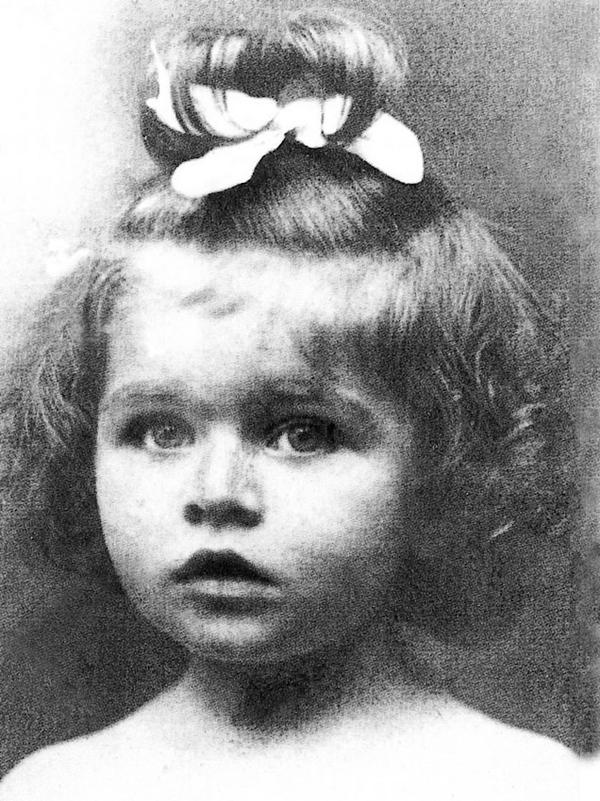
Year 1906. Anna Justine Mahler (Gucki) (1904-1988).
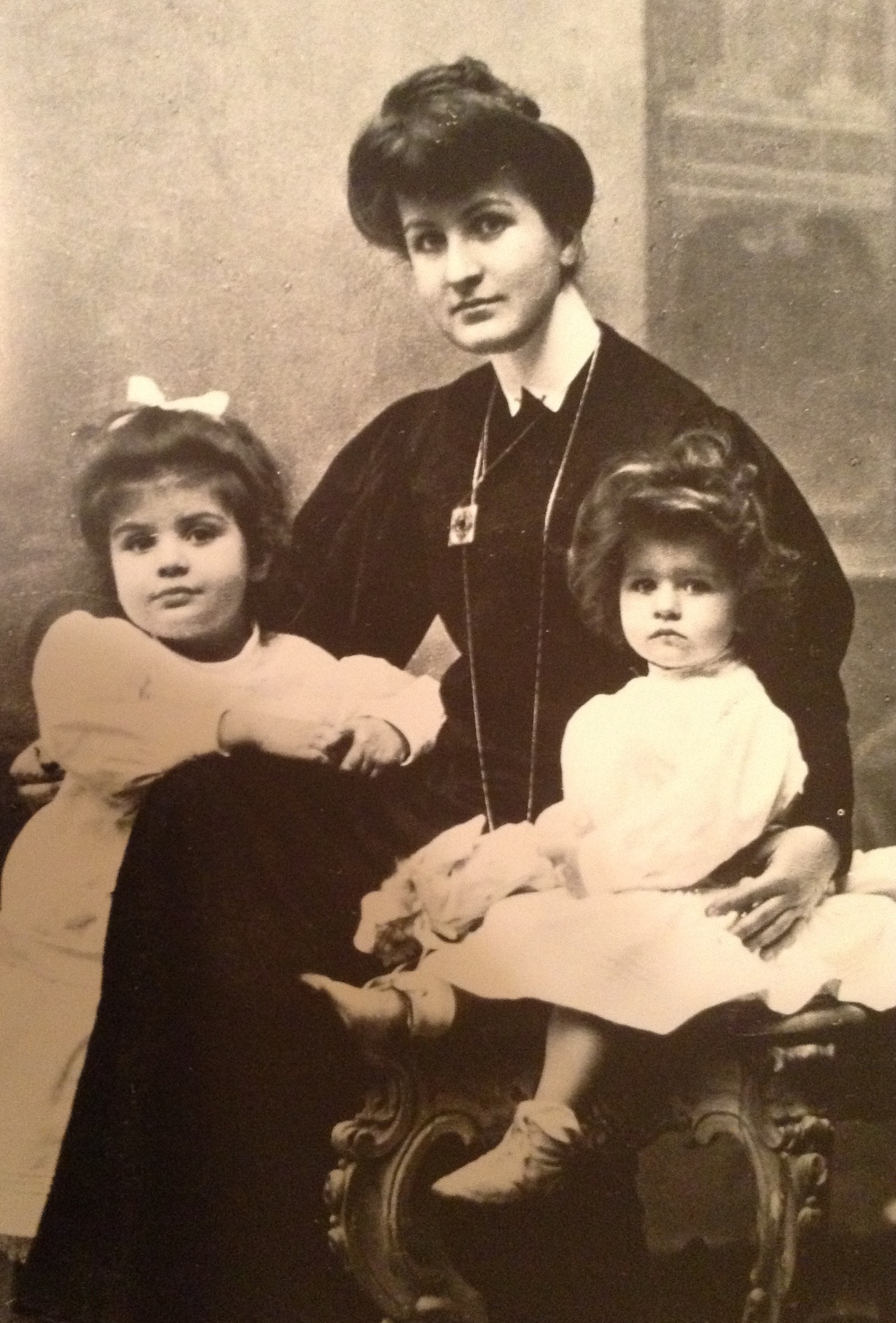
Year 1906. Maria Anna Mahler (Putzi) (1902-1907), Alma Mahler (1879-1964) and Anna Justine Mahler (Gucki) (1904-1988).
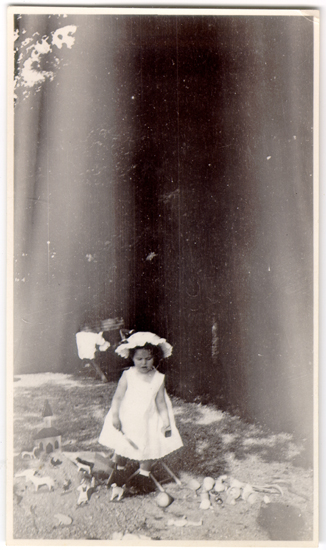
Year 1906 ca. House Gustav Mahler Maiernigg 1901-1907 (Composing cottage, Maiernigg No. 31). Anna Justine Mahler (Gucki) (1904-1988).
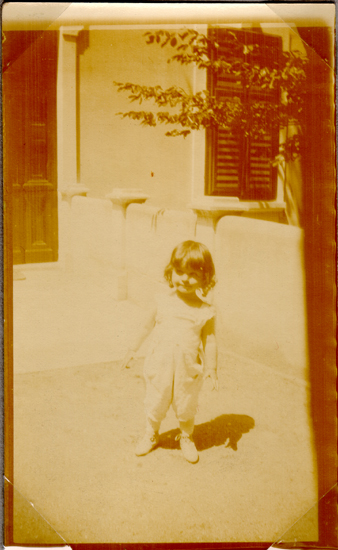
Year 1907 ca. House Gustav Mahler Maiernigg 1901-1907 (Villa Mahler, Maiernigg No. 31). Anna Justine Mahler (Gucki) (1904-1988).
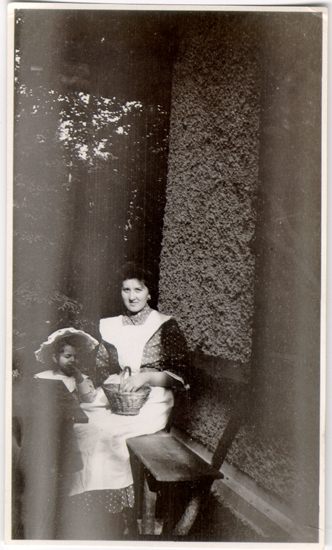
Year 1907. ca. Anna Justine Mahler (Gucki) (1904-1988). With Elise (period 1897)? or Lizzie Turner (ends 1909)?
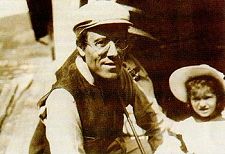
Year 1909. Gustav Mahler (1860-1911) and Anna Justine Mahler (Gucki) (1904-1988). Toblach (now Dobbiaco).
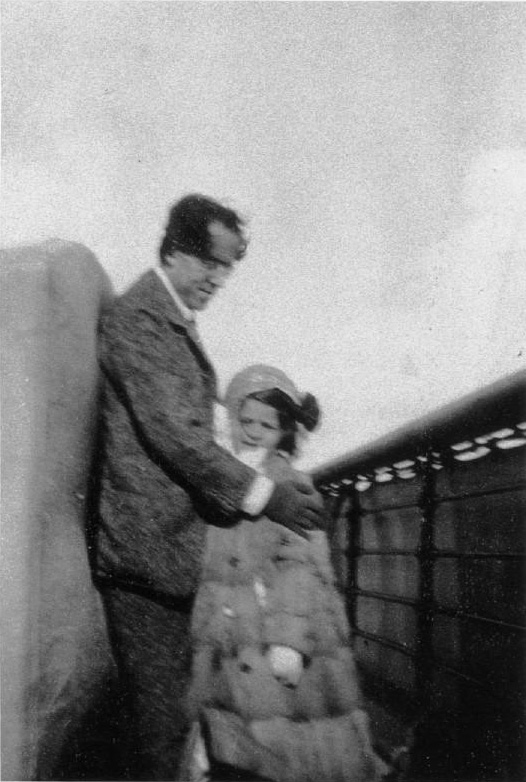
Year 1909. Gustav Mahler (1860-1911) and Anna Justine Mahler (Gucki) (1904-1988). On board ship crossing from Europe to New York.
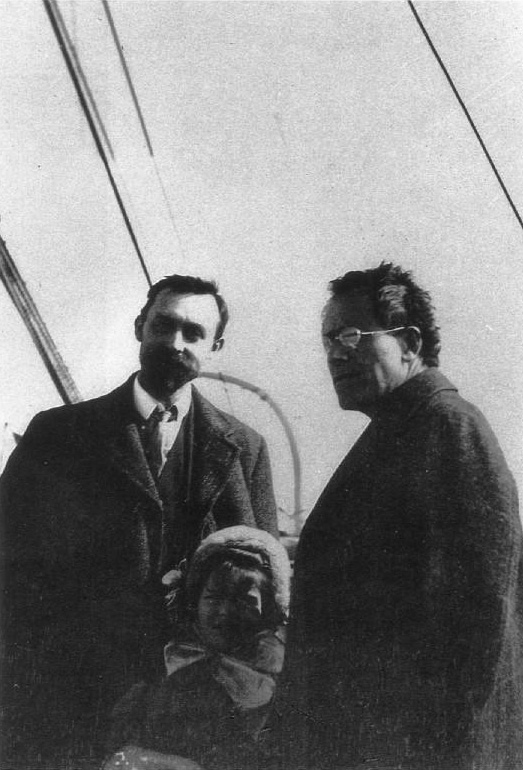
Year 1909. Theodore Spiering (concertmaster), Anna Justine Mahler (Gucki) (1904-1988) and Gustav Mahler (1860-1911).On board ship crossing from Europe te New York.
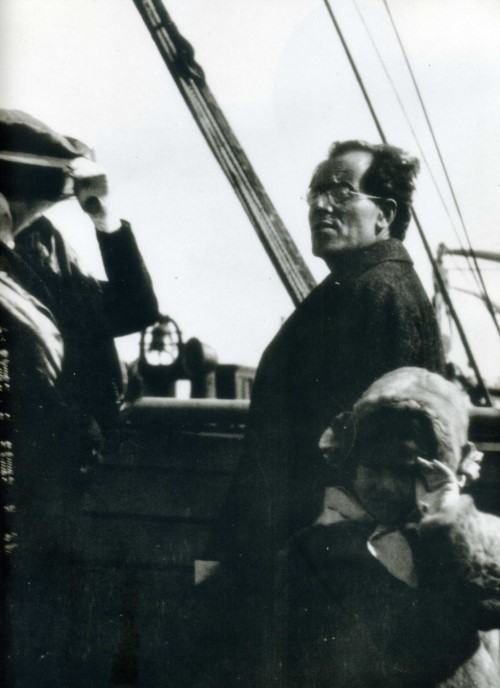
Year 1909. Gustav Mahler (1860-1911) and Anna Justine Mahler (Gucki) (1904-1988). On board ship crossing from Europe te New York.
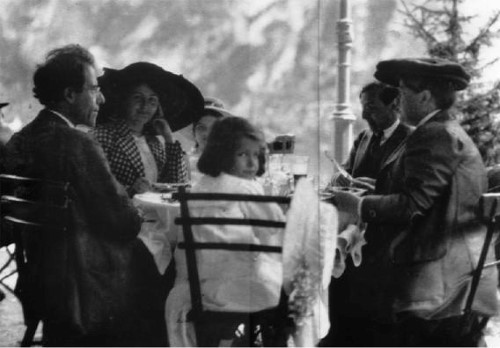
Year 1910. Gustav Mahler (1860-1911), Alma Mahler (1879-1964), Maria Eberstaller-Moll (1899-1945), Anna Justine Mahler (Gucki) (1904-1988) (up front), Oskar Fried (1871-1941) and Anna Sofie Moll-Schindler-Bergen (1857-1938). Pragser Wildsee near Toblach.
Year 1910. ca. Anna Justine Mahler (Gucki) (1904-1988) and Alma Mahler (1879-1964).
Year 1910. Anna Justine Mahler (Gucki) (1904-1988) and Gustav Mahler (1860-1911). New York, Central Park.
Year 1911. ca. Anna Justine Mahler (Gucki) (1904-1988). New York?
Year 1911. ca. Anna Justine Mahler (Gucki) (1904-1988). New York?
Year 1911. Gustav Mahler (1860-1911) (her father) died.

1912. Alma Mahler (1879-1964) and Anna Justine Mahler (Gucki) (1904-1988).
1915 c. Anna Justine Mahler (Gucki) (1904-1988) and Alma Mahler (1879-1964).

1917. Manon Gropius (1916-1935) (center) and Anna Justine Mahler (Gucki) (1904-1988) (right).
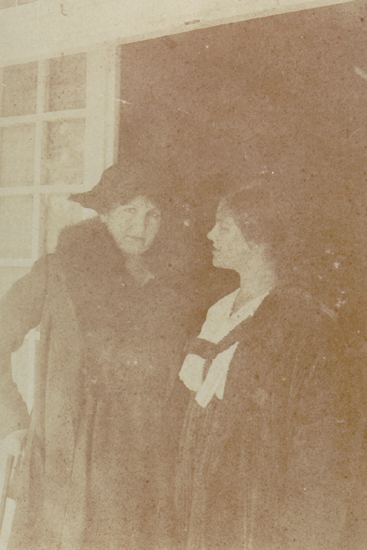
1920. Alma Mahler (1879-1964) and Anna Justine Mahler (Gucki) (1904-1988).
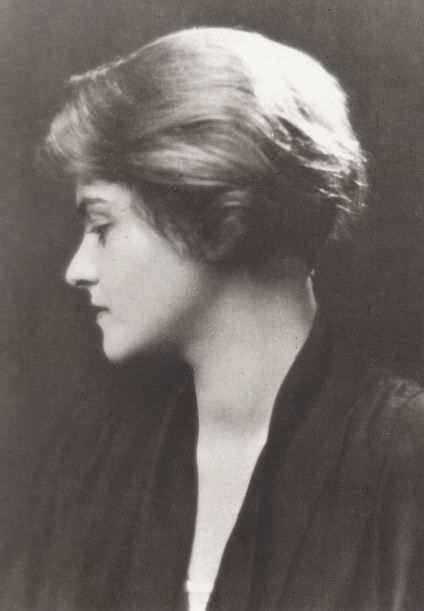
1920. Anna Justine Mahler (Gucki) (1904-1988).
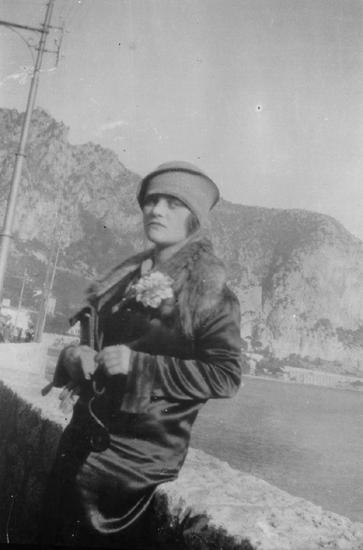
1920. Anna Justine Mahler (Gucki) (1904-1988). Beaulieu-sur-Mer, France.
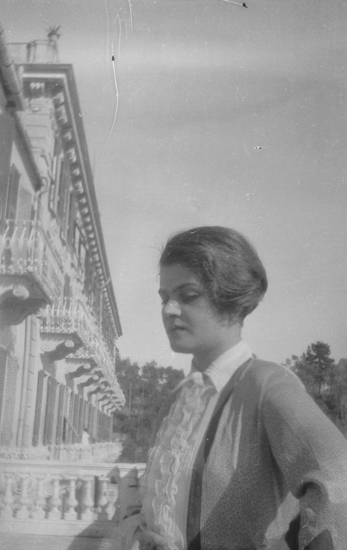
1920. Anna Justine Mahler (Gucki) (1904-1988). City of Santa Margherita, Hotel Imperial, Italy.
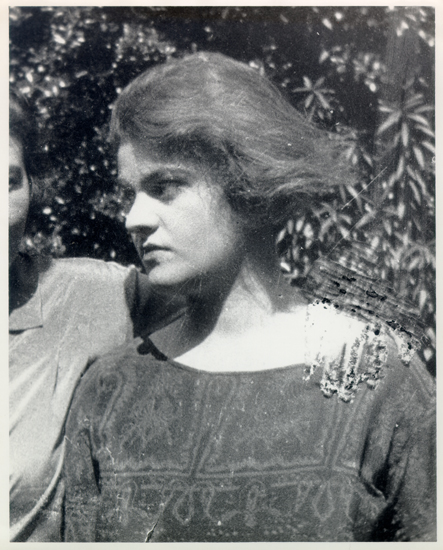
1920 c. Anna Justine Mahler (Gucki) (1904-1988).
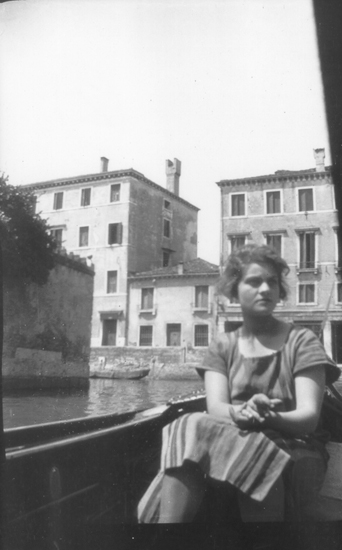
1920 c. Anna Justine Mahler (Gucki) (1904-1988).
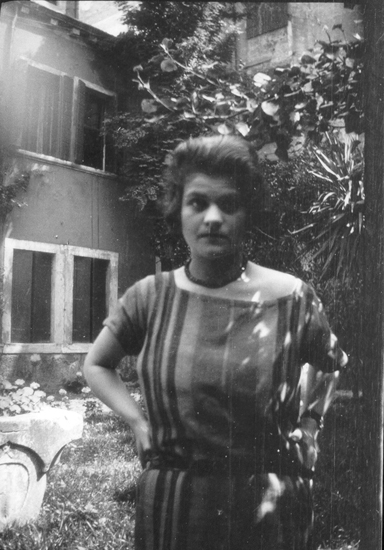
1920 c. Anna Justine Mahler (Gucki) (1904-1988).
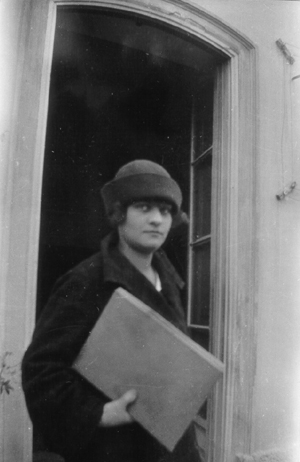
1920 c. Anna Justine Mahler (Gucki) (1904-1988)
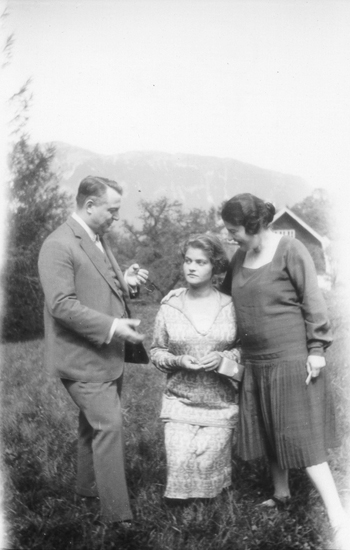
1920 c. Richard Eberstaller (1887-1945), Anna Justine Mahler (Gucki) (1904-1988) and Maria Eberstaller-Moll (1899-1945). City of Breitenstein am Semmering, Austria.

1920 c. Anna Justine Mahler (Gucki) (1904-1988) and Alma Mahler (1879-1964). City of Santa Margherita, Hotel Imperial, Italy.

1920 c. Anna Justine Mahler (Gucki) (1904-1988).
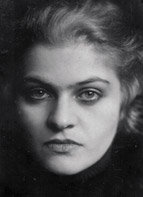
1920 c. Anna Justine Mahler (Gucki) (1904-1988).
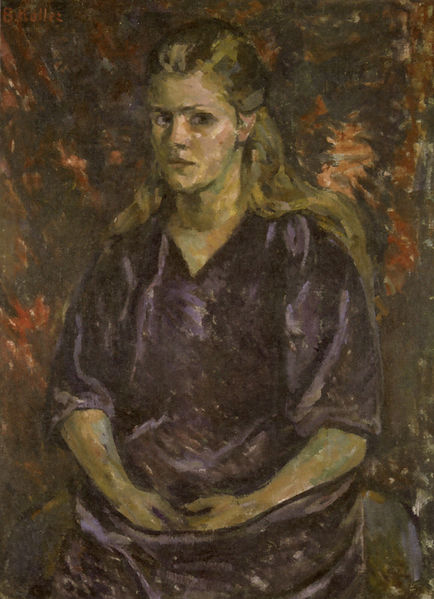
1921. Anna Justine Mahler (Gucki) (1904-1988). Painting by Broncia Koller-Pinell (1863-1934).
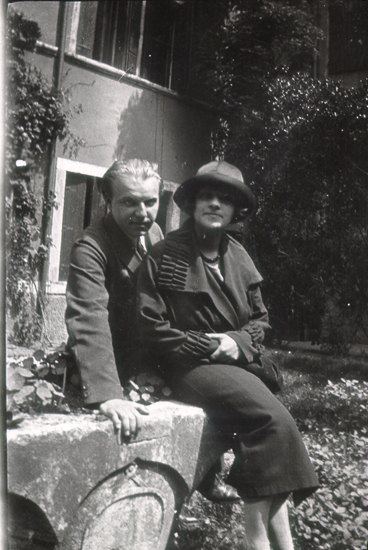
1923. Ernst Krenek (1900-1991) and Anna Justine Mahler (Gucki) (1904-1988).
1927. Anna Justine Mahler (Gucki) (1904-1988). Nude, Paris, France.
1927. Anna Justine Mahler (Gucki) (1904-1988). Study of an nude woman, Paris, France.
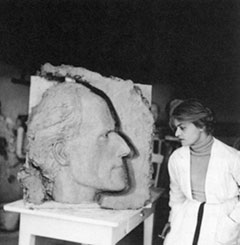
1930. Anna Justine Mahler (Gucki) (1904-1988). Buste of Gustav Mahler (1860-1911).
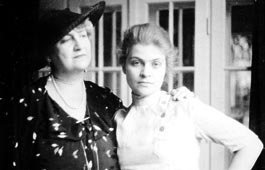
1933. Alma Mahler (1879-1964) and Anna Justine Mahler (Gucki) (1904-1988). Hohe Warte, City of Vienna, Austria.
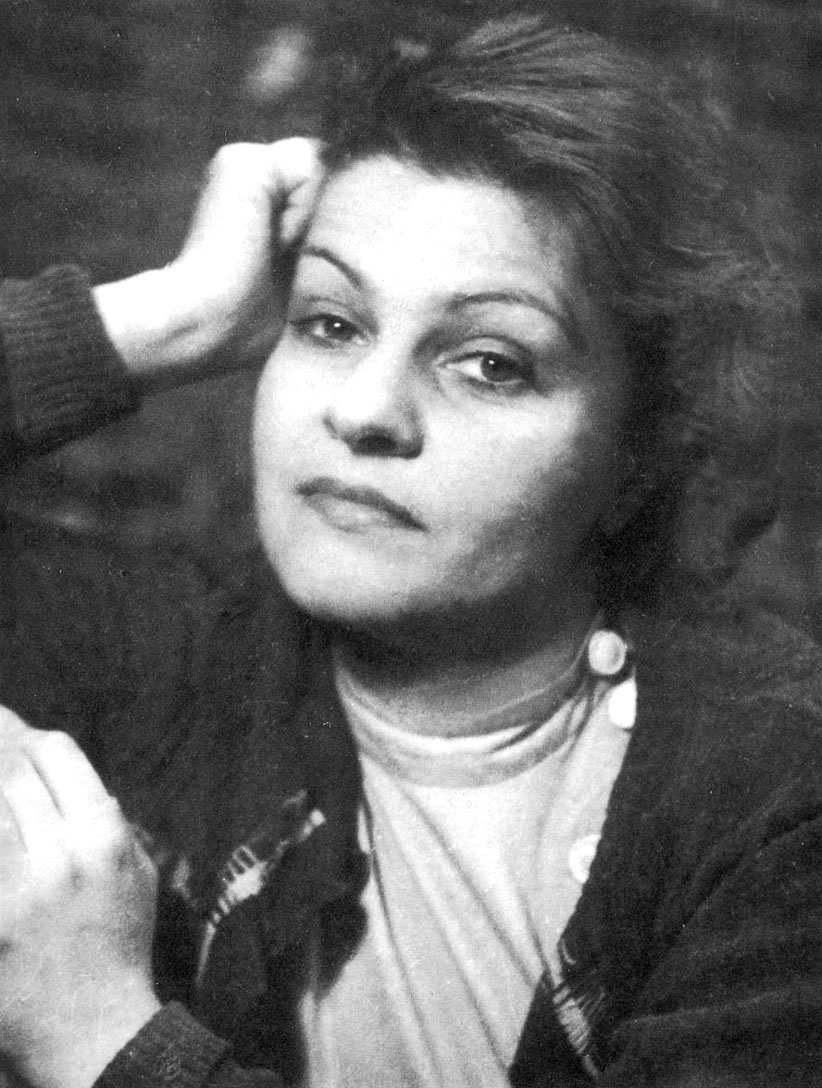
1938. Anna Justine Mahler (Gucki) (1904-1988).
1938. Her grandmother Anna Sofie Moll-Schindler-Bergen (1857-1938) died.
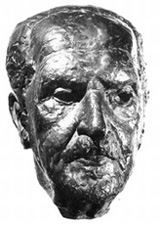
1940. Anna Justine Mahler (Gucki) (1904-1988). Buste Arnold Josef Rose (1863-1946).
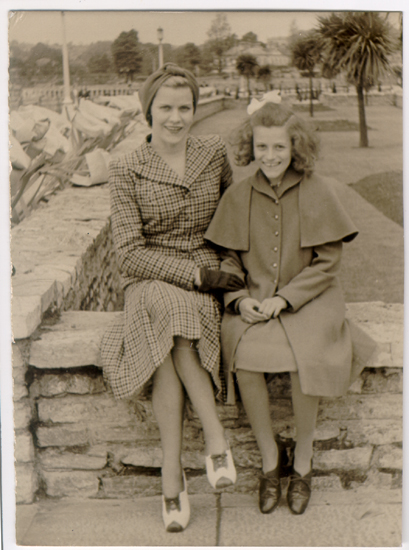
1940 c. Anna Justine Mahler (Gucki) (1904-1988) and Alma Ottilie Leonore Germany-Zsolnay (1930-2010).
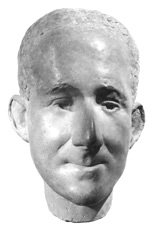
1942. Anna Justine Mahler (Gucki) (1904-1988). Statue of Anatole Fistoulari (1907-1995), London.

1946. Letter from Anna Justine Mahler (Gucki) (1904-1988) to Willi Legler (son of Margarethe (Grete) Julie Legler-Schindler (1881-1942)).
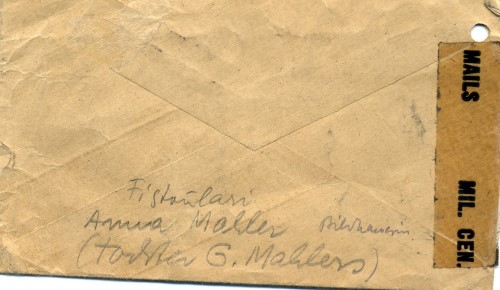
1946. Letter from Anna Justine Mahler (Gucki) (1904-1988) to Willi Legler (son of Margarethe (Grete) Julie Legler-Schindler (1881-1942)).
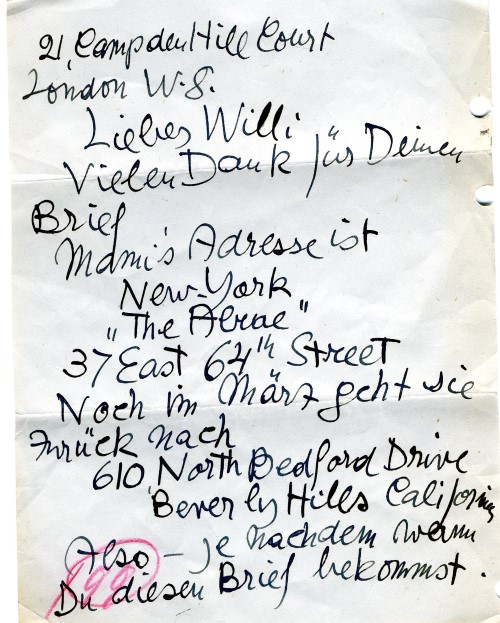
1946. Letter from Anna Justine Mahler (Gucki) (1904-1988) to Willi Legler (son of Margarethe (Grete) Julie Legler-Schindler (1881-1942)).

1946. Letter from Anna Justine Mahler (Gucki) (1904-1988) to Willi Legler (son of Margarethe (Grete) Julie Legler-Schindler (1881-1942)).

1948. Anna Justine Mahler (Gucki) (1904-1988). Studio London.
1950. Anna Justine Mahler (Gucki) (1904-1988). Bronze sculpture monogrammed ‘AM F’ and numbered. Underneath is the foundry stamp ‘… Cologne’ (indistinct). The sculpture is 27 cm height.

1950 c. Anna Justine Mahler (Gucki) (1904-1988). Buste of Gustav Mahler (1860-1911).
1950c. Buste of Gustav Mahler (1860-1911) by his daughter Anna Justine Mahler (Gucki) (1904-1988) . Gift from Mahlers granddaughter Marina Fistoulari Mahler (1943) to the Royal Concertgebouw on the occasion of the Gustav Mahler Festival Amsterdam 1995. Mahlers daughter Anna Justine Mahler (Gucki) (1904-1988) was inspired by the image she had as a child from her father. This is the only bronze cast of this Mahler bust.
1950 c. Buste of Gustav Mahler (1860-1911) by his daughter Anna Justine Mahler (Gucki) (1904-1988) . Gift from Mahlers granddaughter Marina Fistoulari Mahler (1943) to the Royal Concertgebouw on the occasion of the Gustav Mahler Festival Amsterdam 1995. Mahlers daughter Anna Justine Mahler (Gucki) (1904-1988) was inspired by the image she had as a child from her father.
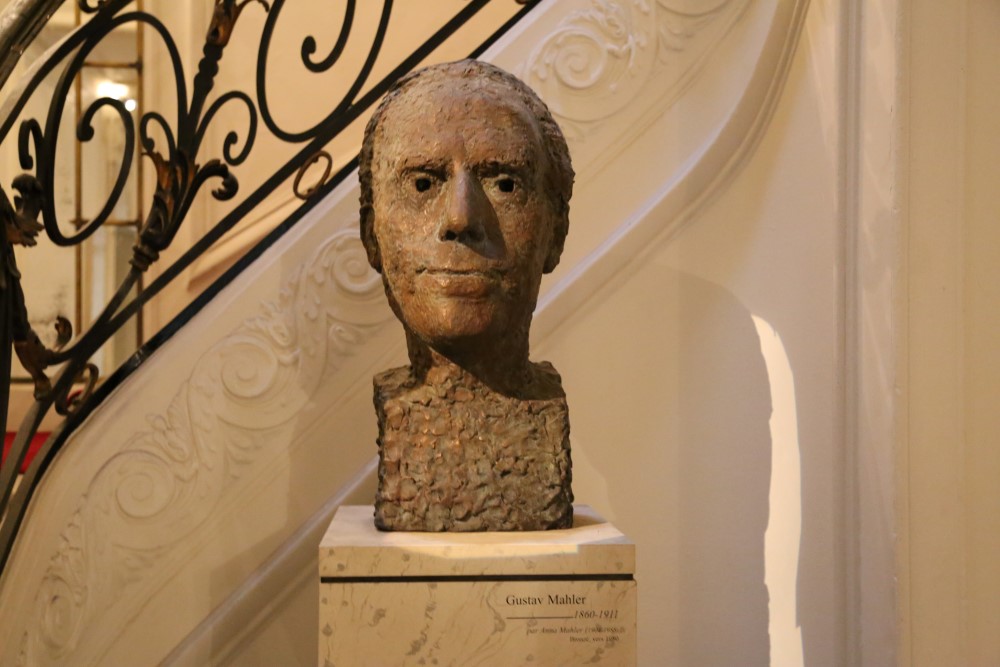
Buste of Gustav Mahler (1860-1911), Médiathèque Musicale Mahler, Paris.
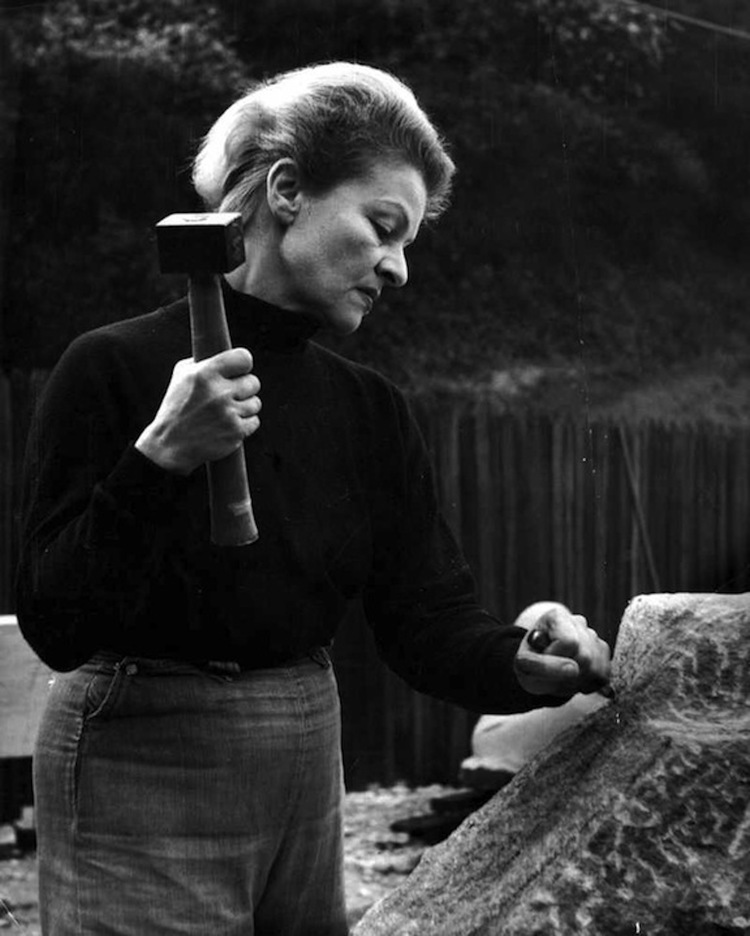
1950 c. Anna Justine Mahler (Gucki) (1904-1988).
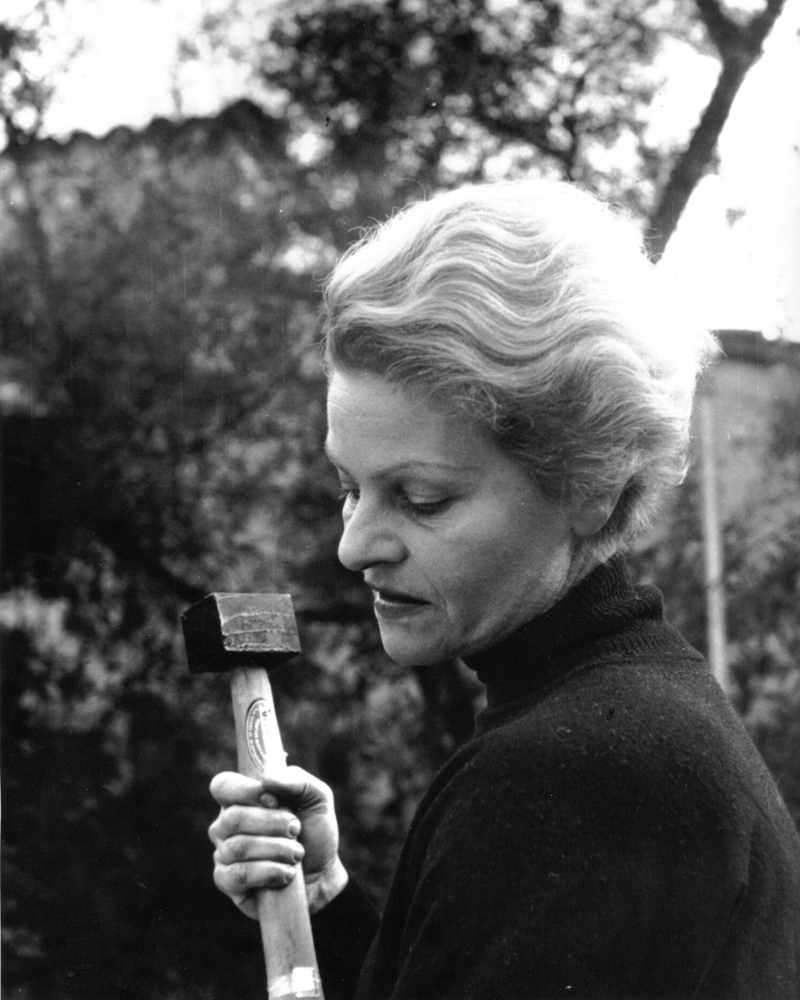
1950 c. Anna Justine Mahler (Gucki) (1904-1988).

1951. Anna Justine Mahler (Gucki) (1904-1988). Buste of Arnold Schoenberg (1874-1951), Los Angeles.
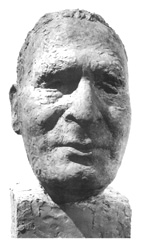
1952. Anna Justine Mahler (Gucki) (1904-1988). Buste of Bruno Walter (1876-1962), Los Angeles.
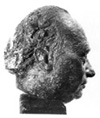
1953. Anna Justine Mahler (Gucki) (1904-1988). Franz Werfel (1890-1945), Los Angeles.
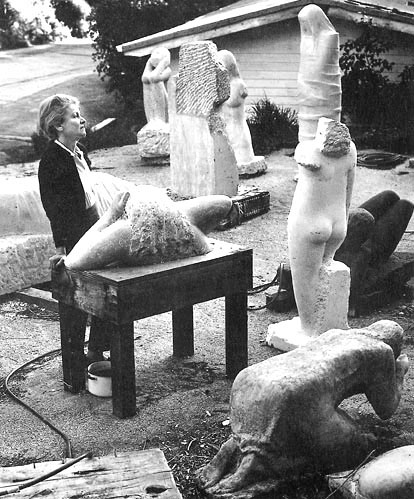
1960. Anna Justine Mahler (Gucki) (1904-1988). Studio Los Angeles.

1961. Anna Justine Mahler (Gucki) (1904-1988) and Alma Mahler (1879-1964).

1961. Anna Justine Mahler (Gucki) (1904-1988). Tower of masks.
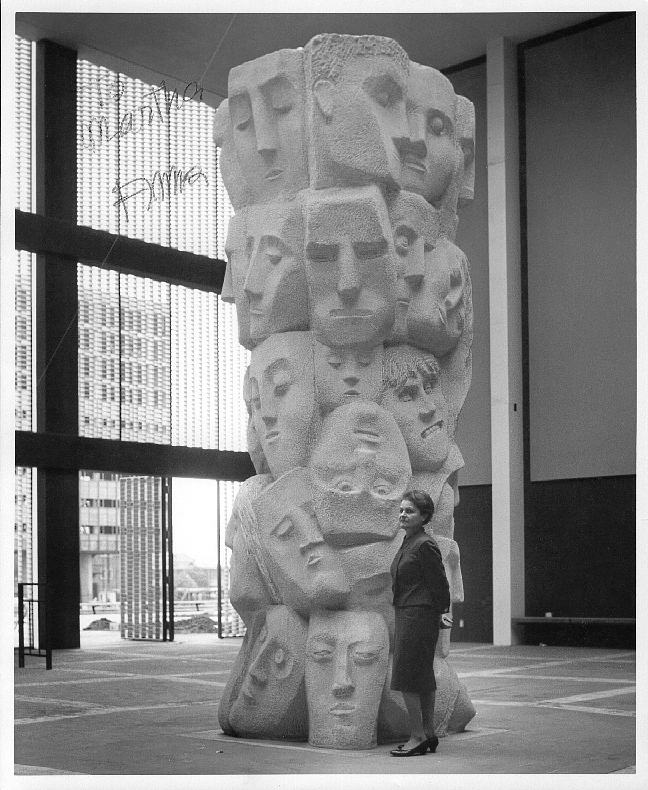
1961. Anna Justine Mahler (Gucki) (1904-1988). In front of her Tower of masks.
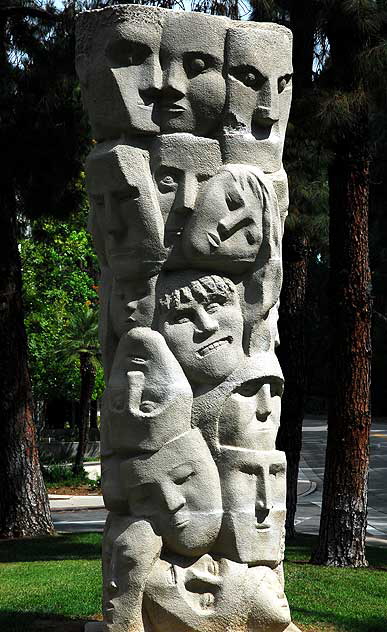
1961. Anna Justine Mahler (Gucki) (1904-1988). Tower of masks. Murphy Sculpture Garden at UCLA. “Tower of Masks” is one of two sculptures at UCLA designed by Anna Mahler. The piece, which was created in 1961, was the gift of Anna Bing Arnold an sits just outside the east perimeter of the Murphy Sculpture Garden, between the Ruskin School of Public Affairs and MacGowan Hall.
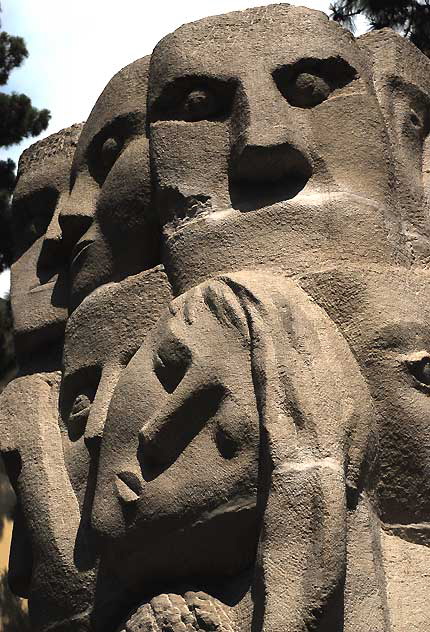
1961. Anna Justine Mahler (Gucki) (1904-1988). Murphy Sculpture Garden at UCLA.
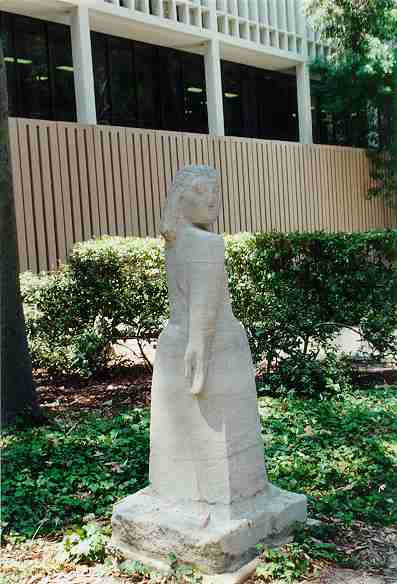
1963. Anna Justine Mahler (Gucki) (1904-1988). Night. UCLA.
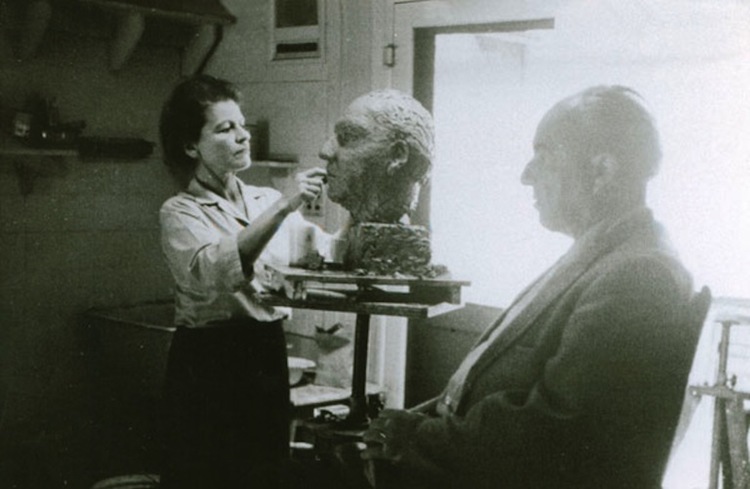
1964. Anna Justine Mahler (Gucki) (1904-1988) and Ernst Krenek (1900-1991).
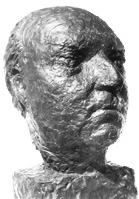
1964. Anna Justine Mahler (Gucki) (1904-1988). Buste of Ernst Krenek (1900-1991).
1964. Her mother (Alma Mahler (1879-1964)) died.
1968. Anna Justine Mahler (Gucki) (1904-1988). Liegende.
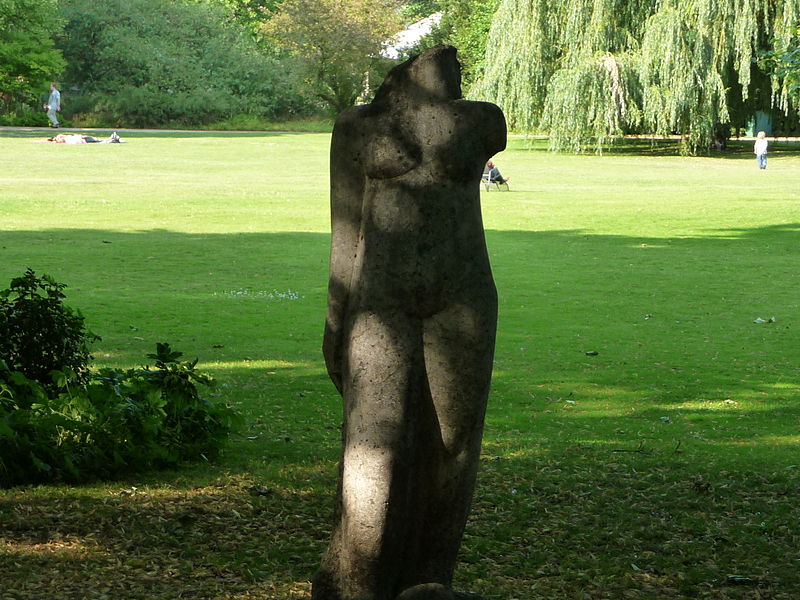
1970. Anna Justine Mahler (Gucki) (1904-1988). Torso, Luisenpark, Mannheim, Germany.
1986. Anna Justine Mahler (Gucki) (1904-1988). Buste of Gustav Mahler (1860-1911)
1988. London, Highgate cemetery.
15-06-1988 Obituary Los Angeles Times
Obituaries : Anna Mahler; Sculptor Known for Larger-Than-Life Figures
Anna Mahler, a sculptor known for her larger-than-life figures and for her portrait busts of such musical giants as Arnold Schoenberg and Bruno Walter, has died in London, it was learned this week.
The daughter of composer Gustav Mahler was 83 and died June 2 in London, said her longtime friend, Manon Manion. Manion added that Miss Mahler had gone to Europe to prepare for an upcoming show of her work in Salzburg, Austria. She was under treatment for kidney ailments at the time of her death.
A longtime resident of West Los Angeles where her outdoor studio on Beverly Glen Boulevard attracted both the curious and the art scholar, Miss Mahler was born in Vienna and studied painting in Rome and Paris. She turned to sculpture saying, “I found I could express myself better in sculpture’s form than I could with paint’s color and design.”
In 1937 she was awarded the Grand Prix at the World Exhibition in Paris for an 8-foot stone statue of a woman. Over the years she became known locally for her outdoor sculpture at UCLA, where she taught art in the 1950s, and at USC.
She came to Los Angeles from Europe in 1950 and first worked out of her home on North Laurel Avenue in Hollywood where she rendered busts of maestros Wilhelm Furtwaengler, Otto Klemperer, Walter and later of composer Schoenberg. She will also be remembered for Schoenberg’s death mask.
One of her better-known works is the “Tower of Masks,” a 15-foot-high, 28-ton pillar of limestone in front of Macgowan Hall at UCLA.
Survivors include her husband Albrecht Joseph, two daughters and three grandchildren. Services will be Saturday in London, Manion said.
More on Anna Mahler
1904 “This birth – at high noon, at the half-way mark of the week, the month and the year – was like a symbol. The child christened Anna, was a joy to us from the moment she opened her big blue eyes”, the reason she was called “Gucki”. (Alma Mahler-Werfel “And the Bridge is Love”)
Anna Mahler, around 1908 1907 Anna Mahler’s older sister died in July 1907 and Gustav Mahler became ill with a heart disease. In December he made his first journey to the United States with Alma and Anna. 1911 During his fourth journey to America Mahler became ill in New York. In spring the doctor there gave him up, yet recommended he consult other doctors in Europe. Dangerously ill, Gustav Mahler returned with Alma and Anna via Paris and Germany to Vienna. “…When Gucki came to his bedside he put his arms round her. ‘Be my good girl, my child.’” (Alma Mahler-Werfel “Gustav Mahler, Memories and Letters”). Gustav Mahler died on May 18.
1916/20 In the summer of 1916 Alma Mahler married Walter Gropius. On October 5, 1916 a daughter named Manon was born. In Alma Mahler’s house, in which the most prominent members of European cultural life came and went, Anna felt lost. Her interest in the numerous visitors focused itself in portraying them by drawings. Soon she used the first opportunityto escape from the intrusive commotion of the “salon”: in the autumn of 1920 she met the student Rupert Koller and married him. However, the marriage lasted less than one year. After the divorce she returned for a short time to Alma and then sought a new life in Berlin. 1922 “Anna Mahler is living with an egocentric, out there in Berlin. He is Ernst Krenek, a highly gifted composer…” (Alma Mahler-Werfel “And the Bridge is Love”). Anna dedicated herself to Krenek’s work. 1923 In summer Anna Mahler and Ernst Krenek (portrait) married. They accepted an invitation from the patron Werner Reinhart of Winterhur and for a time they lived in Zurich. Yet Anna felt restricted in her life in Switzerland. 1924/29 Ernst Krenek left Anna Mahler who returned to Vienna despodent. From there she went first to Rome and took painting lessons with Giorgio de Chirico (…) 1930 Anna Mahler came back to Vienna after a hard and artistically unproductive winter in Paris. “I never wanted to become a painter, colour was of no importance to me, my paintings were always two-dimensional sculptures.”
Anna Mahler took sculpture lessons with Fritz Wotruba which turned out to be extremely promising: from then on Anna Mahler only did sculpture. “Fritz Wotruba often worked in his garden on his huge, still and naturalistic figures. Anna Mahler also had monumental figures in progress. It was an amazing sight, this tiny, beautiful woman standing on a ladder hammering the marble with a strong arm…” (Karola Bloch). 1934 In April Manon Gropius came down with polio-meningitis in Venice. Alma Mahler-Werfel hurried with Anna to Manon’s side. Anna was very close to Manon and took care of her with great love. 1935 Manon Gropius died on April 1922. Alban Berg was composing his violin concerto and dedicated it to Manon (“In memory of an angel”). During this time Anna Mahler did Alban Berg’s bust (…).
“Anna received many visitors in her ground-floor studio at Operngasse 4. It was in the centre of the city…”, recalled Elias Canetti in his autobiography “The Play of the Eyes”. “Anyone who was sufficiently famous was asked for his head, and few were those who were not glad to give it…” (…). 1937 “upright and uniform – the outline acts as a malody – the figure folds her arms behind her head and seems to give ear to herself – to her own soul, in which the secret of life sleeps” wrote the “Neues Wiener Journal” in 1937 about the sculpture of Anna Mahler which was awarded the “Grand Prix” at the World Exhibition in Paris in 1937 (…).
Anna Mahler, around 1938 1938 “We knew that Austria itself was now in deadly peril. But we didn’t know that Austria had been dead for a long time”, remembered Alma Mahler-Werfel. However, Anna Mahler was in two minds about the situation in Vienna in March 1938: “Schuschnigg called a national plebiscite for Sunday, March 13. Anna plunged into frantic agitation for it, running from one Socialist and Christian-Socialist politician to another. It was not until years later that I heard the full story and perceived the enormity of the risk she ran and what would have happened if the Nazis had caught her.”
1939/40 In London (Hampstead) Anna Mahler found herself a modest studio and again began to sculpt. She made further sculptures (…) and busts for example of Paul von Zsolnay and their daughter Alma, Erich Kleiber, Olda Slobotskaja (portrait), Arnold Rose (portrait), John Murray and Arthur Bliss(…).
1942/43 In music circles Anna Mahler met the Russian conducto Anatole Fistoulari (portrait). A year later she married him. On August 1, 1943, Marina Fistoulari was born. Anna spent happy years with Anatole and Marina, fruitful years for her work (…). 1947/50 In Beverly Hills on August 26, 1947, Franz Werfel (portrait) died. Anna Mahler travelled alone to her mother to comfort her. In 1949 the Kenneth Graham Gallery in London exhibited sketches and busts of Anna Mahler, in 1950 the Paul Zsolnay publishing house published a book with reproductions of sculptures of Anna Mahler. 1952/63 To be able to devote herself intensively to her work and her life with her daughter Marina, Anna Mahler fled the “motherly care” a second time. She managed to buy a modest house in Beverly Glen. This small house had an exceptionnally large parking area which became her open-air studio for many years.
1964/69 On December 11 Alma Mahler-Werfel died in New York where she had moved in 1952 from Beverly Hills. Anna Mahler had visited her regularly (…) and was with her at the moment of her death.
Financially independent, she then decided to live in Europe, sold Alma’s house, kept her own in Los Angeles and returned to London. 1968/69 Anna Mahler travelled all over Italy in order to find a home for the summer, and the first time she saw Spoleto, decided to stay there. Anna Mahler bought the Palazzo Maserucci in Macerino outside Spoleto. The foundation dated from 12th century and the latter part was built in the 17th century. During its restoration she bought a flat with a studio on Via San Domenico. 1970/87 On Via degli Emereti 7 in Spoleto she found a house in which she had her studio and stayed in the winter (…), in summer she moved to the Palazzo. All her friends, who came from all over the world to visit her in Spoleto during this time, could tell how happy she felt in her new home. She made friends with many residents of Spoleto.
The exceptional atmosphere of Spoleto influenced both her sculpture (…) of Italian marble and little sculptures (…). In 1975 “Anna Mahler, Her Work” was published; in 1981many sculptures were exhibited in the foyer of the Bayer Building in Leverkusen (and a catalogue was published). 1987/88 In September 1987 Anna Mahler visited Salzburg and Leverkusen where she discussed her exhibition planned for the 1988 Salzburg Festival, then she went to Los Angeles where she intended to finish a sculpture for her exhibition but was unable to complete it. “Salzburg is the most important thing. After Salzburg I shall go to Spoleto. I do not have other plans”, she told a friend who visited her in Los Angeles in May 1988 in confidence. Although very ill, Anna Mahler travelled a couple of days later to London to her daughter Marina and died on June 3.
